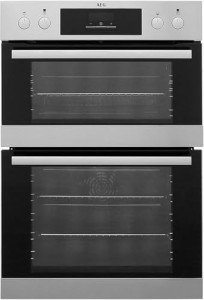The Rise of Electric Integrated Ovens and Hobs: A Comprehensive Guide
On the planet of modern kitchens, electric integrated ovens and hobs have actually ended up being vital appliances, providing performance, style, and benefit. As culinary practices develop, so too do the technologies that make cooking much easier and more pleasurable. This post digs into the features, advantages, setup factors to consider, and maintenance suggestions for electric integrated ovens and hobs, while attending to common regularly asked questions.
What is an Electric Integrated Oven and Hob?
An electric integrated oven and hob is a mix cooking appliance that seamlessly suits kitchen cabinetry. Designed to enhance space and visual appeal, these appliances use the dual performance of an oven and a hob (cooktop) without jeopardizing on performance.
Secret Features of Electric Integrated Ovens and Hobs
- Space-Saving Design: These appliances are built to fit neatly into kitchen units, making the most of offered space.
- Touch Control Panels: Many designs include touch-sensitive controls for easy operation and streamlined look.
- Advanced Cooking Functions: Options like convection baking, barbecuing, and steaming deal with different cooking styles.
- Energy Efficiency: Electric integrated ovens usually supply much better thermal effectiveness compared to conventional gas designs.
- Security Features: Child locks, automatic shut-off, and heat indicators enhance safety during cooking.
Advantages of Electric Integrated Ovens and Hobs
The adoption of electric integrated ovens and hobs in households comes with many benefits that interest a vast array of cooking enthusiasts, from novice cooks to expert chefs. Here are some of the most significant benefits:
1. Effectiveness and Consistency
- Uniform Cooking: Electric ovens and hobs offer constant heat distribution, resulting in evenly prepared food.
- Minimized Cooking Times: Advanced innovations, such as induction heating, can significantly minimize cooking times.
2. Easy to Clean
- Smooth Surfaces: The smooth surfaces of integrated styles remove food traps, making them easy to wipe down.
- Self-Cleaning Options: Many modern-day ovens included self-cleaning features that streamline maintenance.
3. Looks
- Modern Look: An integrated design provides a unified look in the kitchen, making the area appear more contemporary and curated.
4. Adaptability
- Multi-Functionality: Cooking choices range from baking and grilling to frying and simmering, accommodating diverse cooking needs.
- Time-Saving: Can prepare numerous meals at the same time, optimizing meal preparation.
5. Cost-Effectiveness
- Lower Energy Bills: Electric appliances are generally more efficient, resulting in prospective cost savings on energy bills in time.
Setup Considerations
Incorporating electric ovens and hobs into your kitchen requires appropriate planning and consideration. Here are some important aspects to bear in mind:
- Space Measurement: Ensure that the dimensions of the appliance align with the designated installation space.
- Electrical Requirements: Check for sufficient electrical supply, including voltage and amperage to support the home appliance.
- Ventilation Needs: While electric appliances do not require gas ventilation, appropriate space for air flow is still needed.
- Cabinet Compatibility: Ensure cabinets can support the combined weight of the oven and hob.
- Expert Installation: Engaging with a certified professional is advised for safe and compliant setup.
Upkeep Tips for Electric Integrated Ovens and Hobs
Preserving an electric integrated oven and hob makes sure longevity and optimal efficiency. Here are some upkeep practices:
- Regular Cleaning: Wipe down surfaces frequently and make sure spillages are cleaned as soon as possible.
- Inspect Seals: Ensure that door seals are undamaged to prevent heat loss, which can affect cooking efficiency.
- Self-Cleaning Cycle: Utilize the self-cleaning feature if readily available, at least as soon as every couple of months.
- Check Wiring and Cords: Check for harmed cords or connections to prevent electrical threats.
- Set Up Professional Servicing: Regularly arranged service can identify issues before they become substantial issues.
Often Asked Questions (FAQs)
1. Are electric ovens better than gas ovens?
Electric ovens supply more constant heat and typically have features like convection cooking, which can enhance the cooking experience. Lots of users discover them simpler to clean and more secure than gas ovens.
2. What is the distinction between induction and ceramic hobs?
Induction hobs utilize electromagnetic fields to heat pots and pans directly, while ceramic hobs use electric coils below a glass surface area to warm the cooking surface. Induction hobs are typically more energy-efficient and much faster than ceramic alternatives.
3. Can I set up an electric oven and hob myself?
While it is possible for proficient DIY lovers to install their appliances, expert installation is advised to make sure compliance with safety standards and local guidelines.
4. How do I understand if my oven is carrying out efficiently?
Monitor cooking times and temperature settings. If food is consistently undercooked or overcooked, it might show that the oven needs recalibration or maintenance.
5. How can I enhance the life expectancy of my electric oven and hob?
Routine cleansing, proper use, and routine professional upkeep can substantially extend the life-span of these appliances. Avoiding read this post here can likewise help in keeping their stability.
Electric integrated ovens and hobs represent the advancement of cooking appliances, weding functionality with modern design. Their effectiveness, ease of use, and aesthetic appeal make them an exceptional choice for contemporary kitchen areas. As cooking innovation continues to advance, both home cooks and cooking specialists can anticipate even greater innovations in the world of electric integrated cooking services.
With the right maintenance and setup practices, these appliances can improve both the cooking experience and the total functionality of the kitchen area.

